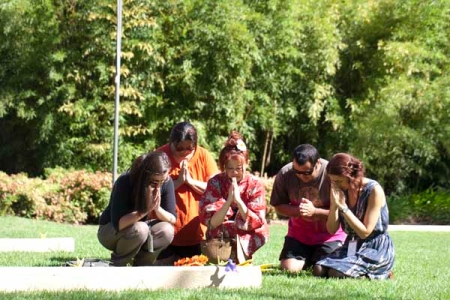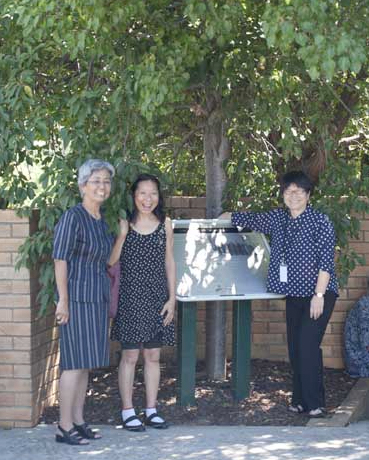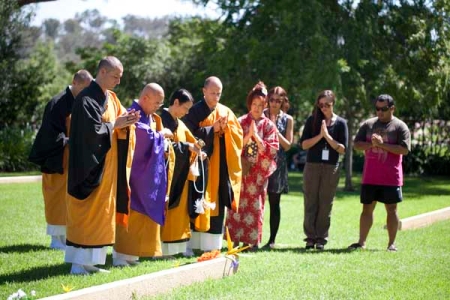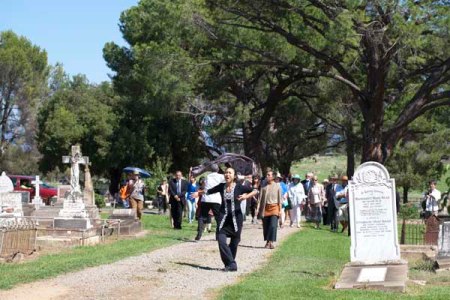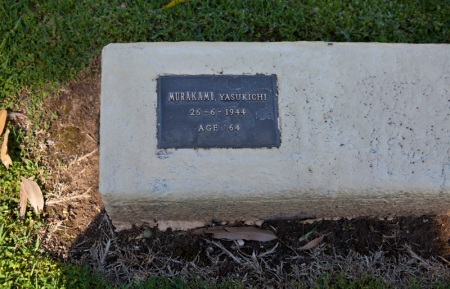The day before the full moon lunar eclipse in September 2015, Melissa Murakami and I visited the Maritime Museum in Fremantle to see the Lustre exhibition. Melissa’s great great grandfather Yasukichi Murakami lived in Broome during the hey-day of the Australian pearl shell industry, and had made a quiet, yet significant contributions to the industry. Quiet, because until this exhibition, the stories of Australian pearling had not been told through the vision of curator Sarah Yu and her team Bart Pigram and Maya Shioji at Nyamba Buru Yawuru with the WA Museum team who had included individual narratives of lessor known black and yellow fellas who were part of the Australian pearling community.
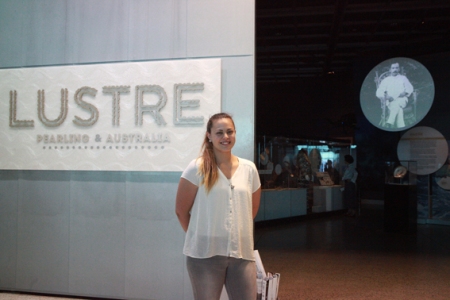
Melissa Murakami and projected self-portrait of Yasukichi Murakami at the Lustre: Pearling & Australia exhibition. Photo by Mayu Kanamori
Murakami and his business partner Captain A.C. Gregory started Australia’s first cultured pearl farm, although the authorities had closed it down because of the local fear of ruining the natural pearl market, which in effect had set Australia’s cultured pearl industry back by 30 years. Murakami had invented a safer diving suit, which was the forerunner for the modern-day scuba gear, and although he had patented his design, its renewal fell due whilst he was interned as an enemy alien during WWII, allowing a French inventor to patent one of a very similar design. Significant contributions dwarfed by the course of history, and the way what stories are told by whom.
I had created short audio stories for this exhibition by using oral history interviews of people who were part of the cultured pearling industry for this exhibition. They included not only pearling masters and Japanese pearl divers, but lesser known stories of Indigenous pearl shell carvers, deck hands, boat builders, and shell graders, among many others.
Although my involvement had been small compared to all the work that had gone into preparing the exhibition, being in constant communication with Sarah Yu, who had put me up in her home whilst I was researching Yasukichi Murakami’s story for Yasukichi Murakami – Through a Distant Lens, gave me the opportunity to contribute some of Murakami’s story and photographs found in Tanami and Darwin for the exhibition
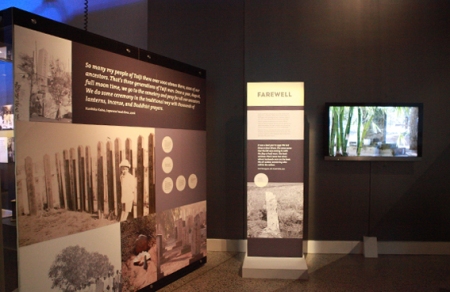
From the exhibition Lustre: Pearling & Australia. The photograph displayed of the boy on the left centre was taken by Yasukichi Murakami of his son Francis Yasunosuke Murakami at the Japanese Cemetery in Cossack. The x marking on the photo indicated the grave of Chiyo Araki, mother of Theresa Shigeno Murakami. The video display on the right was part of project In Repose by Wakako Asano, Satsuki Odamura, Vic McEwan and Mayu Kanamori.
Photo by Mayu Kanamori
I darted around the exhibition looking for images and stories pertaining to Murakami, making sure we did not miss any of them, pointing them out to Melissa with excitement, as if they were my own photographs on display. Melissa’s partner found the copy of a certificate exempting Murakami from a dictation test, issued by the Commonwealth of Australia as part of the Immigration Act 1901-1920. Displayed in one of the glass cabinets, the second page of the certificate was of his left palm, stamped by the customs and excise office in 1925.
There is something powerful about a hand print of someone who had once lived. Its proof of having-once-lived-ness enters our awareness vividly in rawness; much more so than a photograph of the deceased, perhaps because of our digital age and the proliferation of photographs.
Melissa studied the lines on her ancestor’s palm, then her own in comparison. It is often said in palmistry that the left hand shows traits a person was born with, and the right hand, the kind of a person they had become; and perhaps because of this, she found the shape of his palm and the lines similar to her own. She later told me of feeling a strong connection with this particular exhibit, as if “the only separation between was an ink pad, and not time.”
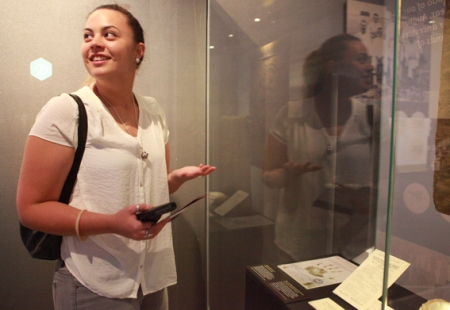
Melissa Murakami comparing her left palm to that of her ancestor Yasukichi Murakami. Photo by Mayu Kanamori
Before we left the museum, we took photos of each other, separately and together in groups at the entrance of the exhibition. Seen from the entrance was a screen hoisted from the ceiling, its shape round, probably because it emulated the shape of a pearl. Black and white images of people who worked in the Australian pearling industry were projected on to the screen, one by one. When it was Melissa’s turn to be photographed on her own, one of Murakami’s self portraits taken at Captain Gregory’s home appeared on the screen.
That afternoon on my way back to Perth, I saw a daytime super moon, full, just above the horizon in the clear blue sky, perfectly round like a cultured pearl. Was it my own little ego that made me see Yasukichi Murakami sitting in Gregory’s cane chair, on the moon, acknowledging my small contribution for his descendants and wider world to recognise his? Perhaps it was time to return to humility, and remember that as people, we all have a part to play, a small but significant purpose to fulfil as part of the whole.
Lustre: Australian Pearling will be on at the Western Australian Maritime Museum in Fremantle from 20 June to 25 Oct 2015 travelling to other locations.
More info:
Lustre by Sarah Yu, Bart Pigram and Maya Shioji on the Griffith Review
